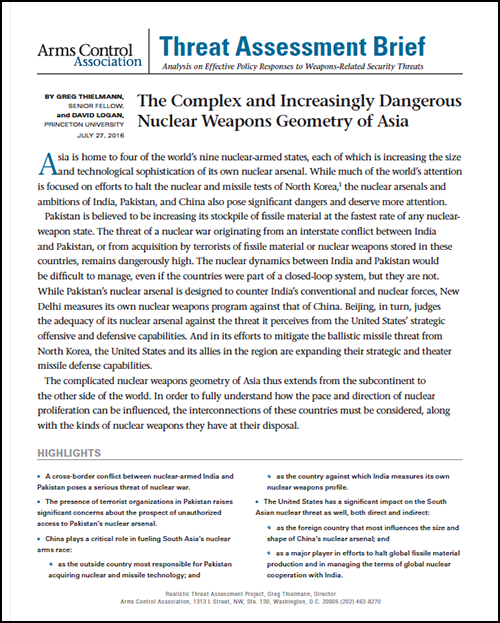By Greg Thielmann
July 2016
 |
| Download PDF |
While much of the world’s attention is focused on efforts to halt the nuclear and missile tests of North Korea, the nuclear arsenals and ambitions of India, Pakistan, and China also pose significant dangers and deserve more attention.
The complicated nuclear weapons geometry of Asia extends from the subcontinent to the other side of the world. While Pakistan’s nuclear arsenal is designed to counter India’s conventional and nuclear forces, New Delhi measures its own nuclear weapons program against that of China. Beijing, in turn, judges the adequacy of its nuclear arsenal against the threat it perceives from the United States’ strategic offensive and defensive capabilities. And in its efforts to mitigate the ballistic missile threat from North Korea, the United States and its allies in the region are expanding their strategic and theater missile defense capabilities.
In order to fully understand how the pace and direction of nuclear proliferation can be influenced, the interconnections of these countries must be considered, along with the kinds of nuclear weapons they have at their disposal.




